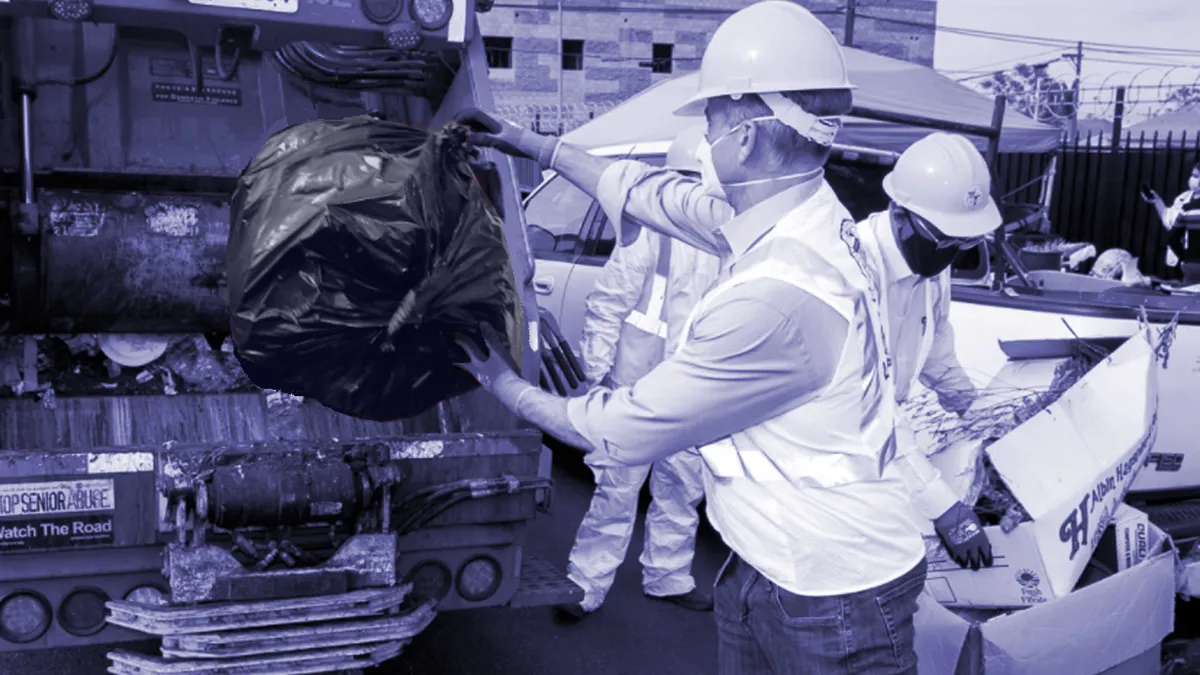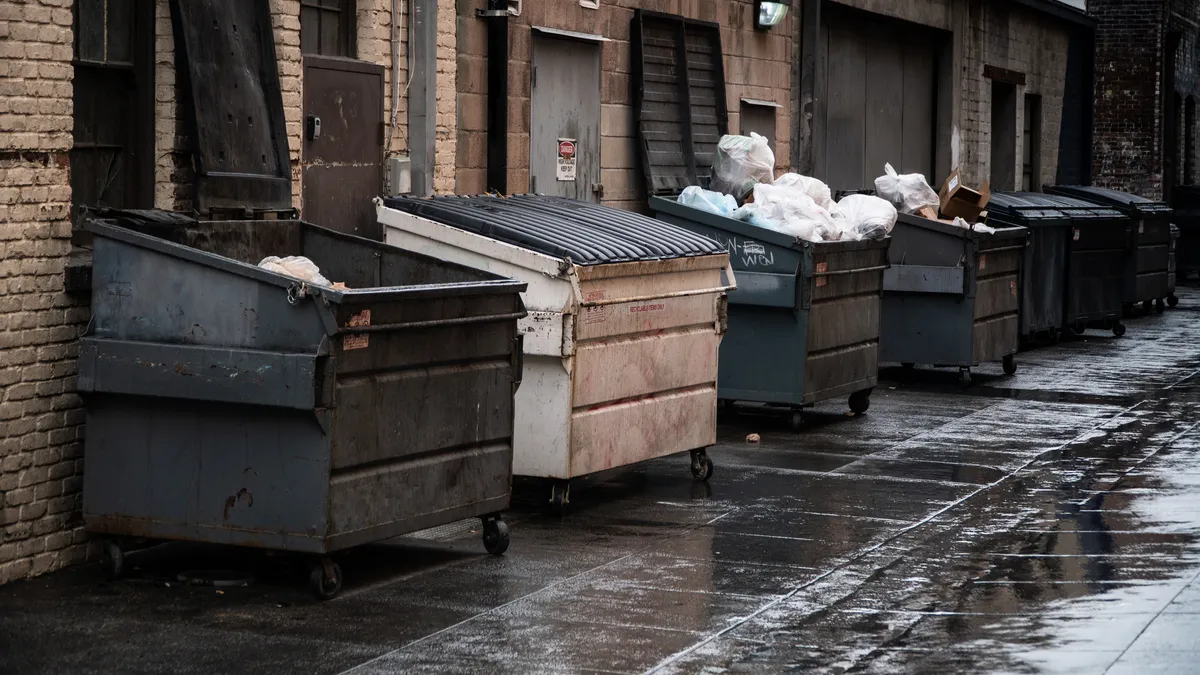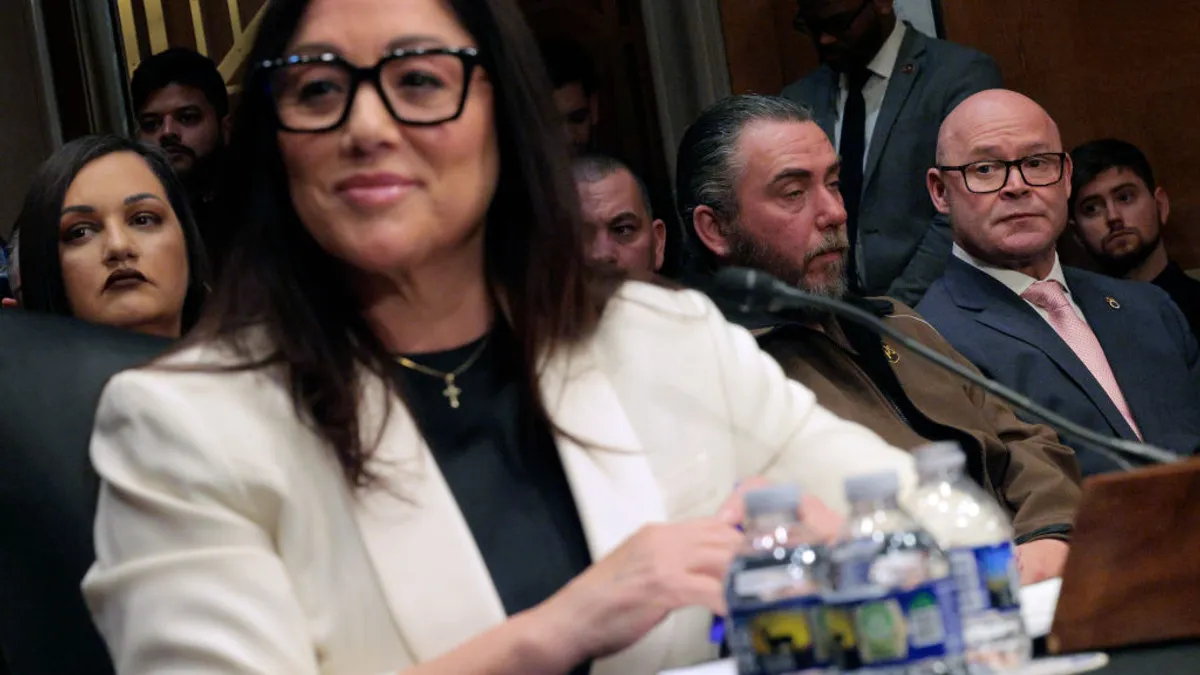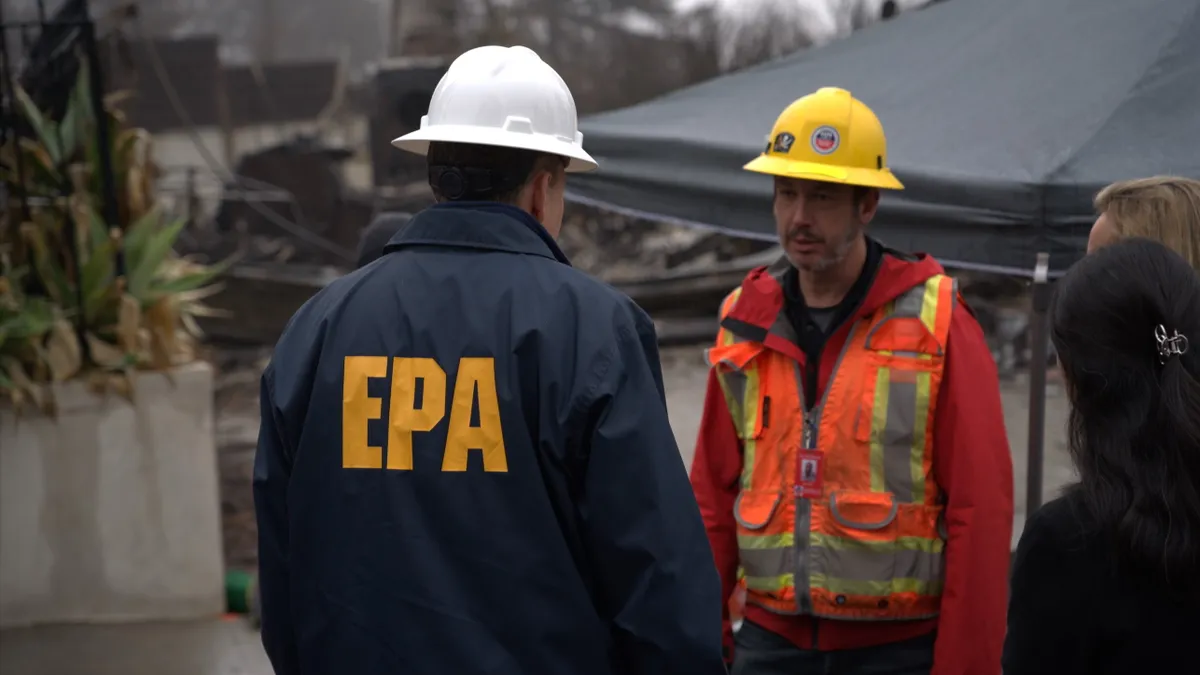City Haul is Waste Dive's new ongoing series examining the people and issues shaping municipal waste and recycling across the U.S. Have a tip or an angle about city-run operations that you think should be part of the conversation? Please reach out to mrachal@industrydive.com.
City public works directors or heads of sanitation agencies have been forced to adapt their roles and operations the past two years. It's a sign of the times for a job involving essential public services and frontline workers during the pandemic, and is also due to growing adoption of new systems, technology, and social media to engage residents.
So too have the people in these roles changed. The past two years have seen a wave of fresh faces — some department veterans, others transplants from around the country — in these top positions. In fact, over half of the 10 largest cities in the U.S. have new public works, sanitation or solid waste directors since the start of 2020.
New York saw the promotion of longtime department member Edward Grayson to commissioner, as former head Kathryn Garcia put sanitation issues in the spotlight as she pursued (and came close to winning) the office of mayor. Other top cities also found new solid waste, sanitation and public works leaders through internal hires: Chicago elevated Cole Stallard to commissioner for the Department of Streets and Sanitation in August following a retirement. Phoenix announced in August it was moving Joe Giudice, former assistant public works director, into the top spot, after the then-director became a deputy city manager.
Other cities reshuffled veterans from across government. LA Sanitation & Environment (LASAN) Executive Director Barbara Romero was shifted into that role this summer after the former director stepped down; she had most recently served as deputy mayor of city services in the Eric Garcetti administration. And in San Antonio, David Newman became solid waste director at the beginning of last year when the city opted to reorganize its previous Transportation and Capital Improvements Department into two new departments (Transportation, and Public Works), moving the previous solid waste director into an assistant city manager position.
Alternatively, Dallas brought in a new sanitation director this summer from Sacramento, California's Public Works Division, and just within the last week, Houston announced its own new new solid waste director, hired from Tampa, Florida's Department of Solid Waste and Environmental Program Management.
Amid “graying” within the public works field, some communities have been more forward-looking with succession planning than others, said American Public Works Association President Stan Brown. He noted that while technology in automated trucks, for routing or to sort recyclables, stands out as the most significant category of change, “the public involvement in everything that government does” is equally key.
“I think citizens are more aware, and I think that comes from technology, the use of social media — how you can get the word out, how you can communicate, it's just a much more responsive service that we provide nowadays,” Brown said.
Public communication needs may span from service disruptions to the importance of sustainability efforts and diversion goals. Being able to articulate needs to elected officials is also key, Brown said, considering how solid waste may be less visible or relatable than advocates for the fire department, for instance. "They've got to be an advocate, they've got to be a salesperson, they've got to be the voice for that profession," he said.
In the view of Solid Waste Association of North America CEO David Biderman, “I think that the challenge in 2021 is that a DPW director needs to be facing externally, and not just internally. It's not just about managing the workforce and getting the garbage picked up or getting the street sweepers out,” he said, echoing the importance of communicating better about services to elected officials, media, and customers alike.
Essential attributes
In what Biderman called a “subtle shift,” communication is now the defining skill of a public works-type leader. Today, “it’s not really about being technically competent and managing the workforce. I think the greater priority is on communication ability,” he said.
Throughout her career, Marlene Feist has held communications and strategy roles in Spokane, Washington’s government, including in the public works department. As of March, she’s the city’s public works director.
“What we're trying to do is be in the space where the citizens are, and that's evolved over time,” she said. “Now, the diversification of how people get their information has made it more difficult for a city to get the attention of its citizens.”
Social media is huge, Feist said, “and not just the mainstream ones like Facebook and Twitter, but also Nextdoor is a really popular one in our area.”
Communications strategy is also on the mind of Barbara Romero, who since taking the helm at LASAN has been thinking about how to re-up certain waste diversion priorities. In Los Angeles, “a lot of our recycling goals in organics have gone to the wayside,” she said. She’s thinking about “slick and sleek” ways to reeducate the public about recycling and contamination, including reaching younger people on TikTok. “We have to modernize the way we communicate to people about the importance of our priorities,” she said.
Romero is a Los Angeles native. In her view, knowing communities firsthand is a key strength. “I think it's important to hire people that are from and within communities,” she said. Romero noted that infrastructure such as landfills a lot of time has displaced people. Future planning around waste and recycling goals, for instance, requires rethinking how that land or infrastructure can better serve the community. “So I think that that personal perspective and that understanding matters, because I think people are looking for people in those leadership positions that reflect communities,” she said.
Conversely, Baltimore DPW Director Jason Mitchell joined the city this summer from across the country. He most recently served as assistant city administrator in Oakland, California. Mitchell noted his experience with certain initiatives from Oakland, such as its organics diversion programs, that could help Baltimore with goals such as moving toward zero waste. "My job is to bring some of the things that we did very well on the West Coast here to the East Coast and reapply them, maybe not the same application or prescription, but some modification of that that works well for this region."
As for other attributes current and future public works leaders need, Mitchell noted that while many leaders in the field traditionally have backgrounds in engineering, today’s positions require business acumen. "You’re seeing a lot of cities go that way,” he said.
While conducting a nationwide search to fill the role, the Baltimore City Council in March approved a 30% salary increase to make the DPW director position the third-highest paid in the city at $245,000.
“The Department of Public Works is, I would always say, the lifeblood of your organization,” Mitchell said. “[Baltimore Mayor Brandon Scott] wanted to hire and attract top talent; talent that not only understood the operations of public works but also the business of public works, which are two different things.”
Despite the varied demands of top-level public works roles, APWA’s Brown said that, broadly, offering some flexibility is key when aiming to attract top talent. “Work is not the end-all for people,” he said. The pandemic has illuminated that “you've got to really have a culture of looking at that work-life balance and realize that that's improving.”
What’s staying ‘post-pandemic’
Many of the pandemic's earliest shocks, including significant virus transmission among staff and sharp skews in residential and commercial waste volumes, have since settled. But shifts in where people spend their time, how they interact with government services, and how workplaces approach safety are among the lasting change that will continue to push evolution in solid waste leadership roles and related positions.
Joe Giudice, Phoenix's new public works director, is a veteran of the department, so he experienced firsthand how day-to-day staff communication and operations shifted during the pandemic. For instance, to kick off the work day, rather than gathering staff in conference rooms, they've been meeting in smaller groups out by the trucks, in addition to more remote device-based communications.
That transition is not without challenges. "I think there's definitely something that can get lost in translation with that shift," he said, noting in particular the difficulty that the adjusted approach can present when onboarding new employees. "How do they engage and become part of the organization?"
Still, some of those changes they liked and are considering continuing, Giudice said. There are examples on the customer-facing side as well. During the pandemic, the city switched from hosting event-style hazardous waste collection days during certain pre-scheduled weekends, to allowing for residents to schedule an at-home pickup for household hazardous waste over the phone or online. "That's proven to be very highly successful and the residents seem to really love it, so we're transitioning to make that likely a permanent switch in terms of how we offer that service."
Ultimately, according to Spokane's Feist, "I think we're all looking more at resiliency and how our systems operate if there's disruption, regardless of what that disruption is." As for sharing these lessons and best practices, officials who stepped into their roles in 2020 and 2021 have been a bit constrained in their ability to connect with peers around the country.
"I have not spent as much time making those connections as I should have," Feist said. "I had a couple of conferences that I had on my to-do list, and when you get to the virtual meeting, the demands of the day get in the way. So the idea that hopefully in the next year we can actually go somewhere in person where you can really focus on what's happening and talk to other people in person, I think will be really important for my growth as the director."
Romero shared similar sentiments. "Within this new COVID reality, there's an opportunity to do more of that sharing where we don't have to leave our offices," she said. "You could connect with leaders across the country in a pretty efficient way. So I think that's something that I need to do, but I think we all get caught up in just getting the work done and not spending enough time on sharing best practices."






















